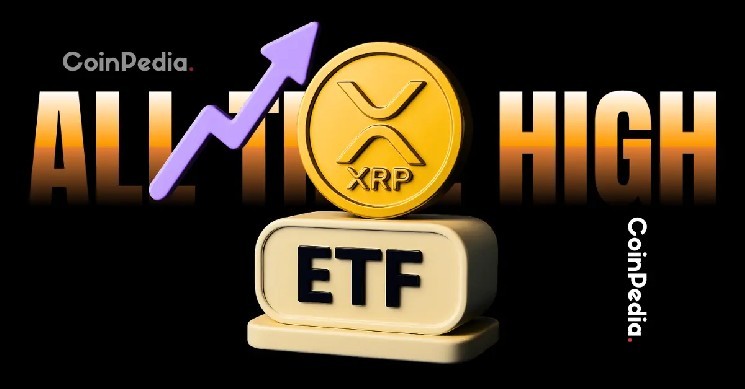Cyber Hornet Introduces Groundbreaking Hybrid Crypto-Equity ETFs to Revolutionize Investment Landscape
New Investment Vehicles Combine S&P 500 Stability with Cryptocurrency Growth Potential
In a significant development for the cryptocurrency investment sector, Cyber Hornet has submitted prospectuses for three innovative exchange-traded funds (ETFs) that blend traditional equities with direct cryptocurrency exposure. These pioneering investment vehicles aim to provide investors with a balanced approach to portfolio diversification, combining the relative stability of blue-chip stocks with the growth potential of digital assets.
The three new ETFs, filed under the One Fund Trust, will each maintain a strategic allocation of 75% in S&P 500® index components and 25% in a specific cryptocurrency. The offerings include the Cyber Hornet S&P 500® and Ethereum 75/25 Strategy ETF (Ticker: EEE), the Cyber Hornet S&P 500® and Solana 75/25 Strategy ETF (Ticker: SSS), and perhaps most notably, the Cyber Hornet S&P 500® and XRP 75/25 Strategy ETF (Ticker: XXX). According to the filing details, each fund will undergo monthly rebalancing to maintain the target allocation ratios.
“CYBER HORNET just filed for an S&P + XRP ETF with the ticker $XXX Eth and Solana + SPX too,” noted financial analyst Eric Balchunas on social media, highlighting the industry’s immediate attention to these novel investment products.
Strategic Filing Approach May Accelerate Regulatory Review
What distinguishes Cyber Hornet’s approach is not only the hybrid investment structure but also their strategic filing methodology. The company submitted these ETFs as 485APOS amendments, effectively adding them to an existing investment trust structure. This approach could potentially streamline the Securities and Exchange Commission (SEC) review process, as it builds upon previously established regulatory frameworks rather than creating entirely new ones.
The timing of these filings is particularly significant given the evolving regulatory landscape for cryptocurrency investments. The SEC typically has approximately 75 days to respond to such filings, though this timeline could be accelerated depending on various factors including the amendment-based nature of the submissions.
Industry experts suggest that Cyber Hornet’s approach represents a sophisticated understanding of both market demands and regulatory nuances. “Filing these hybrid ETFs as amendments to an existing structure demonstrates a keen awareness of potential approval pathways,” explained Katherine Reynolds, a financial markets regulatory analyst. “This could potentially give Cyber Hornet an advantage in navigating the often complex SEC review process for cryptocurrency-related investment products.”
The XRP Factor: A Milestone for Ripple’s Digital Asset
The inclusion of XRP in one of these hybrid ETFs marks a particularly noteworthy development for Ripple’s digital asset. If approved, this would represent the first time XRP appears in a U.S. ETF directly tied to the S&P 500® index, potentially signaling a new chapter in XRP’s integration into mainstream financial products.
October promises to be a pivotal month for XRP-based investment products, with multiple dedicated ETF decisions scheduled. The SEC is expected to rule on Grayscale’s XRP ETF application on October 18, followed by 21Shares on October 19, Bitwise on October 20, CoinShares and Canary Capital on October 23, and WisdomTree on October 24. Industry observers speculate that the regulatory body might issue a consolidated decision covering some or all of these applications, establishing a clearer regulatory stance on XRP-based investment vehicles.
“The concentration of XRP ETF decisions in October creates a watershed moment for both Ripple and the broader cryptocurrency investment landscape,” noted blockchain investment strategist Michael Chen. “The Cyber Hornet filing adds another dimension to this regulatory inflection point by offering a hybrid approach that might be viewed more favorably by regulators concerned about standalone cryptocurrency exposure.”
Reimagining Investment Structures for the Digital Asset Era
The hybrid design of Cyber Hornet’s proposed ETFs represents an innovative approach to cryptocurrency investment that could appeal to both traditional finance institutions and crypto enthusiasts. By combining the market-tested performance of S&P 500® companies with direct cryptocurrency exposure, these funds offer a potentially more palatable entry point for institutional investors who have thus far remained hesitant about pure cryptocurrency investments.
This balanced approach addresses several concerns that have historically limited institutional participation in cryptocurrency markets. The predominant allocation to established equities provides a foundation of familiarity and relative stability, while the cryptocurrency component offers exposure to the growth potential and diversification benefits of digital assets. This structure potentially mitigates some of the volatility concerns that have kept many institutional investors on the sidelines of the cryptocurrency market.
“These hybrid ETFs essentially create a middle ground between traditional finance and cryptocurrency markets,” explained financial innovation researcher Dr. Sarah Williams. “By packaging these assets together in a regulated investment vehicle with a thoughtful allocation strategy, Cyber Hornet is potentially creating a bridge that could facilitate greater institutional adoption of cryptocurrencies as a legitimate asset class.”
Market Implications: Institutional Doorways and Regulatory Signposts
The approval of these hybrid ETFs could have far-reaching implications for both cryptocurrency markets and traditional finance. Perhaps most significantly, these products could open cryptocurrency markets to a broader range of institutional participants, including pension funds, endowments, and hedge funds that have specific mandate requirements regarding investment vehicles and risk profiles.
This potential shift from predominantly retail participation to more balanced institutional involvement could fundamentally alter market dynamics for the featured cryptocurrencies. Institutional capital tends to bring not only increased volume but also different investment behaviors, potentially reducing volatility and enhancing market maturity. For XRP specifically, ETF approval could represent a significant milestone in its journey toward mainstream financial acceptance, particularly given its complex regulatory history.
“The market implications extend beyond just price action,” noted institutional cryptocurrency adoption specialist Jennifer Torres. “Approved crypto-equity hybrid ETFs would establish important precedents for how digital assets can be integrated into traditional investment structures. They would also provide valuable data points for both regulators and institutions regarding how these hybrid vehicles perform in various market conditions.”
Conversely, rejection of these applications could temporarily dampen market enthusiasm and extend the regulatory uncertainty surrounding cryptocurrencies, particularly for XRP. However, industry participants emphasize that even rejections provide valuable feedback that shapes future applications and ultimately contributes to the maturation of the cryptocurrency investment ecosystem.
As the financial world awaits the SEC’s decisions on these innovative investment vehicles, Cyber Hornet’s hybrid ETF filings represent a significant evolutionary step in the convergence of traditional finance and cryptocurrency markets. By thoughtfully combining established equities with emerging digital assets, these proposed products may well chart a course for the next generation of diversified investment options in an increasingly digital financial landscape.












